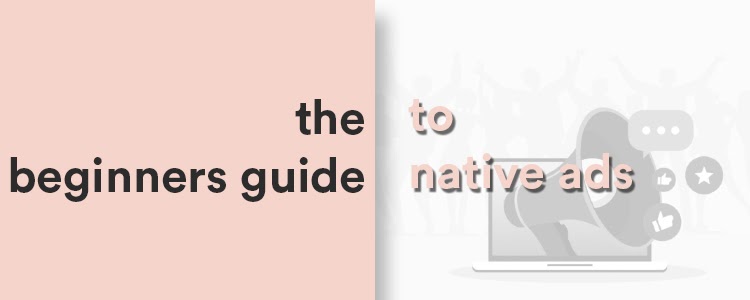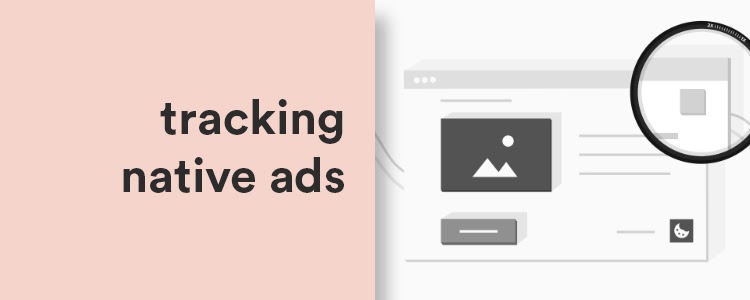
Recently, native advertising has become extremely popular. Native ads are a high-cost way to advertise your goods and services that reach broad audiences. So let’s get you up to speed on what they are and how to use them!
What is Native Advertising?
If you are on the web reading articles, magazines, or blogs, you come across a lot of native ads. Maybe you didn’t even notice that those ads were ads. This form of advertising fits perfectly into the content the website provides making it almost invisible.
Native ads are a form of paid media where the ads follow the natural form and function of the website where it's placed. The goal of this form of advertising is to offer the user a seamless experience without it being obvious that the user is reading an ad.
This form of advertising is on pretty much every website and platform. Social media platforms like Facebook, Twitter, Tumblr, Youtube, etc all use it. As well as magazines and newspapers like Times, Forbes, Wall Street Journal, New York Times, etc.
Native ads on Facebook look like a regular post, on New York Times, like a news article, on Twitter like a tweet. They aren’t like regular banner ads that you can easily spot as advertising.
What all of these native ads have to have is a clear declaration that it’s an ad. You can see this mostly as a tag “Paid advertisement” on the top of the page or “sponsored” within a post.
Why use native advertising?
Native advertising fits into the content of the third-party site where they are advertising. They “hide in plain sight”. This means that these ads get read and engaged by people who usually ignore ads or click away at the first sight of them. Some research showed that native ads perform almost double compared to banner ads.
These ads also fit into the context of the website they are advertising on. If you have a native ad on Wall Street Journal, that ad will most likely be something related to finance. Because of this the ads mostly give some value to the reader. These ads might be great research papers or articles that mention the product or service that is being sold in the last few paragraphs.
This also means that people who read through the article have more of an incline to click on the link and follow through. This is shown through statistics that are overwhelmingly positive for native advertising.
Tracking Native Ads

Usually, when you start your campaigns, you decide which goals you want to accomplish. These goals can vary and with those variations, you will also need to adjust your marketing.
The most common goals are:
- Building brand awareness
Brand awareness includes gaining impressions, website traffic, and users. - Increasing engagement
Engagement usually falls to app downloads, subscriptions, and sign-ups - Driving sales
Sales focus on... Well... sales obviously
To make sure that you are reaching those goals you set up for yourself you need to monitor your performance.
The first thing you will need to track your campaigns is a pixel. Setting up pixels is straightforward so you shouldn’t have any issues with this. When this is done you can track a lot of things! Popular metrics include:
- Impressions
- Clicks
- CTR
- Time on Page
- Average Engagement Length
- Number of Pages Viewed
- Subsequent Conversions
With these metrics, you can analyze how your campaigns are performing and what you should change or adjust. You should gain an understanding of your audience and what your ideal targeting could be. This way you will know how to better optimize your native ads and determine where to invest. Through tracking, you will understand where to increase spending and add more campaigns and where to wind it down or stop. In the end, you will also get a report if a campaign worked or not.
Good metrics can mean a lot for your campaigns. They can uncover why your campaigns are working or why they aren’t working. All you need to do is optimize your campaigns with the info you have through tracking.
Optimizing Native Ads

Like with any campaign in advertising, optimization is key. An optimized campaign can go from losing your money to making your monthly earnings in a day. This is why optimizations are so important.
The first thing you should do is analyze your metrics and see where you can improve and what you should change. We can split these optimizations into steps. This way it’s easier to remember and follow through. So let’s start!
-
Step 1 - Optimizing Creative Angles
Poor creatives can easily be the death of your campaign and leave a hole in your wallet. Sometimes your creatives don’t have to be bad at all. People might just be saturated with your angle so you need to change it up. This is why you should optimize the creatives first.
You should start with a couple of variations. You need to see what your audience likes and what it doesn’t. So write a couple of different angles and headlines, create a few images and run these variations for a few days and see what works the best.
Let’s say you have 5 variations.
- Red
- Blue
- Green
- Black
- White
After a few days, your blue and green variations are doing great, while the rest are underachieving. You should remove the worst performing ones and create 3 new ones. These 3 should be a mix of new ones and mixtures of the current ones. So you might have something like:
- Blue
- Green
- Purple
- Light Blue
- Light yellow.
Now that you have these new variations you should test again and repeat the process until you find the winning combination. After you have found the winning ones run those but still keep testing every now and then so you don’t fall behind.
-
Step 2 - Optimizing Landing Pages
The next thing you should focus on is your landing pages. Good native ads have their ads linked to specially designed landing pages that will boost your conversions drastically. After your creatives got users to your LPs, the LPs should bring them through the funnel and rack in those sweet conversions.
These are some of the best practices on LPs:
- Follow the standard patterns that are industry standards
If you are unsure what these patterns are, a good thing to do is see what your competitors are doing. Let their work inspire you.
- Place CTAs
The headline and Hero image will capture your audience’s attention. And then it’s your job to keep it with the copy. Make your audience convert with properly placed CTAs. Native advertising can’t have many CTAs but your LPs can have a boat laid off them. We recommend you do one at the beginning and end. And you can sprinkle a few in between after some sections.
- Understand the Hierarchy
Internet users are used to a certain style of landing pages. These styles have proven themselves to be most effective. If you don’t know what these standard LP practices are. Take a look at some of the most successful ones of your competition!
- Follow the standard patterns that are industry standards
-
Step 3 - Optimize Placements
Placements are something people start worrying too early about. If you have optimized ads and LPs, you will get great results even if your placements are sub-optimal. Turn off low-performing widgets and make sure you have a variety of widgets or website traffic.
Scaling Your Native Ads

One of the biggest issues advertisers face is scale. Usually, brands and businesses think that native advertising isn’t scalable, but of course, it is! Once you have everything optimized, it is time to scale! You can do a lot to scale so let’s start!
When starting you should start with a higher bid and slowly lower it as you see which campaigns perform the best. Slowly adjust your bid until you see that lowering it drastically downgrades your performance. This process usually takes days or weeks to get right. Slow and steady moves are the best. Your bids should adjust in a few cents at a time, and you should leave your campaigns running for a few days. This way you will exactly know when they start underperforming.
If you have campaigns that are already performing well, increase the budget. A bigger budget will open you to more scale and volume. Remember, you want to scale only your most profitable campaigns. Those will rack in the big bucks!
Final Words
Native advertising can be daunting at first. You need to analyze where you are placing your ads. Optimize them to fit the pages. Make great copy and images. Create a good LP and optimize it. After all of this, you will need to do a lot of testing to make sure your campaigns perform to their best ability for the lowest cost. After all of this is done you should have a great campaign that will be profitable.
Native advertising might not be for everyone, but it’s not as complicated as people think it is. With a few guides and some common sense, you will get the hang of it in no time!
Please log in to Facebook to access the comments section